Enhanced Photoacoustic Spectroscopy Integrated with a Multi-Pass Cell for ppb Level Measurement of Methane
Abstract
1. Introduction
2. Measurement Principle of Photoacoustic Spectroscopy
3. Integration of an Acoustic Resonator with a Multi-Pass Cell
4. Experiment Setup
5. Experiment Results and Analysis
5.1. Enhancement of PA Signal Using MPC
5.2. Linearity of CH4 PA Signal
5.3. Allan Variance
5.4. Measurement of CH4 in the Atmosphere
6. Conclusions
Author Contributions
Funding
Institutional Review Board Statement
Informed Consent Statement
Data Availability Statement
Acknowledgments
Conflicts of Interest
References
- Global Methane Tracker 2023. Available online: https://www.iea.org/reports/global-methane-tracker-2023 (accessed on 30 June 2024).
- Roccarina, D.; Lauritano, E.C.; Gabrielli, M.; Franceschi, F.; Ojetti, V.; Gasbarrini, A. The Role of Methane in Intestinal Diseases. Am. J. Gastroenterol. 2010, 105, 1250–1256. [Google Scholar] [CrossRef] [PubMed]
- Rabchinskii, M.K.; Sysoev, V.V.; Varezhnikov, A.S.; Solomatin, M.A.; Struchkov, N.S.; Stolyarova, D.Y.; Ryzhkov, S.A.; Antonov, G.A.; Gabrelian, V.S.; Cherviakova, P.D.; et al. Toward On-Chip Multisensor Arrays for Selective Methanol and Ethanol Detection at Room Temperature: Capitalizing the Graphene Carbonylation. ACS Appl. Mater. Interfaces 2023, 15, 28370–28386. [Google Scholar] [CrossRef] [PubMed]
- Rabchinskii, M.K.; Sysoev, V.V.; Glukhova, O.E.; Brzhezinskaya, M.; Stolyarova, D.Y.; Varezhnikov, A.S.; Solomatin, M.A.; Barkov, P.V.; Kirilenko, D.A.; Pavlov, S.I.; et al. Guiding Graphene Derivatization for the On-Chip Multisensor Arrays: From the Synthesis to the Theoretical Background. Adv. Mater. Technol. 2022, 7, 2101250. [Google Scholar] [CrossRef]
- Tan, X.C.; Zhang, H.; Li, J.Y.; Wan, H.W.; Guo, Q.S.; Zhu, H.B.; Liu, H.; Yi, F. Non-dispersive infrared multi-gas sensing via nanoantenna integrated narrowband detectors. Nat. Commun. 2020, 11, 5245. [Google Scholar] [CrossRef] [PubMed]
- Lou, X.T.; Somesfalean, G.; Svanberg, S.; Zhang, Z.G.; Wu, S.H. Detection of elemental mercury by multimode diode laser correlation spectroscopy. Opt. Express 2012, 20, 4927–4938. [Google Scholar] [CrossRef] [PubMed]
- Lin, H.Z.; Lou, X.T.; Zhong, W.J.; He, S.L. Continuous monitoring of elemental mercury employing low-cost multimode diode lasers. Meas. Sci. Technol. 2015, 26, 085501. [Google Scholar] [CrossRef]
- Lou, X.T.; Zhang, T.; Lin, H.Z.; Gao, S.Y.; Xu, L.J.; Wang, J.N.; Wan, L.; He, S.L. Detection of gaseous elemental mercury using a frequency-doubled green diode laser. Opt. Express 2016, 24, 27509–27520. [Google Scholar] [CrossRef] [PubMed]
- Lin, H.Z.; Gao, F.; Ding, Y.J.; Yan, C.S.; He, S.L. Methane detection using scattering material as the gas cell. Appl. Opt. 2016, 55, 8030–8034. [Google Scholar] [CrossRef] [PubMed]
- Li, F.M.; Zhang, T.; Wang, G.X.; He, S.L. Simultaneous Detection of CO2 and N2O Based on Quartz-Enhanced Photothermal Spectroscopy by Using NIR and MIR Lasers. Prog. Electromagn. Res. M 2023, 118, 137–149. [Google Scholar] [CrossRef]
- Zhang, T.; Xing, Y.X.; Wang, G.X.; He, S.L. High Sensitivity Continuous Monitoring of Chloroform Gas by Using Wavelength Modulation Photoacoustic Spectroscopy in the Near-Infrared Range. Appl. Sci. 2021, 11, 6992. [Google Scholar] [CrossRef]
- Mohebbifar, M.R. High-sensitivity detection and quantification of CHCl3 vapors in various gas environments based on the photoacoustic spectroscopy. Microw. Opt. Technol. Lett. 2019, 61, 2234–2241. [Google Scholar] [CrossRef]
- Xing, Y.; Wang, G.; Zhang, T.; Shen, F.; Meng, L.; Wang, L.; Li, F.; Zhu, Y.; Zheng, Y.; He, N.; et al. VOC Detections with Optical Spectroscopy. Prog. Electromagn. Res. 2022, 173, 71–92. [Google Scholar] [CrossRef]
- Yan, D.; Popp, J.; Frosch, T. Analysis of Fiber-Enhanced Raman Gas Sensing Based on Raman Chemical Imaging. Anal. Chem. 2017, 89, 12269–12275. [Google Scholar] [CrossRef]
- Jiao, C.; Lin, Z.; Xu, Y.; He, S. Noninvasive Raman Imaging for Monitoring Mitochondrial Redox State in Septic Rats. Prog. Electromagn. Res. 2022, 175, 149–157. [Google Scholar] [CrossRef]
- Luo, J.; Lin, Z.J.; Xing, Y.X.; Forsberg, E.; Wu, C.D.; Zhu, X.H.; Guo, T.B.A.; Wang, G.X.; Bian, B.L.; Wu, D.; et al. Portable 4D Snapshot Hyperspectral Imager for Fastspectral and Surface Morphology Measurements. Prog. Electromagn. Res. 2022, 173, 25–36. [Google Scholar] [CrossRef]
- Jiang, Y.M.; Zhang, T.; Wang, G.X.; He, S.L. A Dual-Gas Sensor Using Photoacoustic Spectroscopy Based on a Single Acoustic Resonator. Appl. Sci. 2021, 11, 5224. [Google Scholar] [CrossRef]
- Wang, G.X.; Zhang, T.; Jiang, Y.M.; He, S.L. Compact photoacoustic spectrophone for simultaneously monitoring the concentrations of dichloromethane and trichloromethane with a single acoustic resonator. Opt. Express 2022, 30, 7053–7067. [Google Scholar] [CrossRef]
- Huang, Y.; Zhang, T.; Wang, G.X.; Xing, Y.X.; He, S.L. Wavelength-modulated photoacoustic spectroscopy sensor for multi-gas measurement of acetone, methane, and water vapor based on a differential acoustic resonator. Appl. Phys. Lett. 2023, 122, 111105. [Google Scholar] [CrossRef]
- Kosterev, A.A.; Bakhirkin, Y.A.; Curl, R.F.; Tittel, F.K. Quartz-enhanced photoacoustic spectroscopy. Opt. Lett. 2002, 27, 1902–1904. [Google Scholar] [CrossRef]
- Ma, Y.F. Review of Recent Advances in QEPAS-Based Trace Gas Sensing. Appl. Sci. 2018, 8, 1822. [Google Scholar] [CrossRef]
- Yin, X.K.; Dong, L.; Wu, H.P.; Ma, W.G.; Zhang, L.; Yin, W.B.; Xiao, L.T.; Jia, S.T.; Tittel, F.K. Ppb-level H2S detection for SF6 decomposition based on a fiber-amplified telecommunication diode laser and a background-gas-induced high-Q photoacoustic cell. Appl. Phys. Lett. 2017, 111, 031109. [Google Scholar] [CrossRef]
- Ma, Y.F.; Qiao, S.D.; He, Y.; Li, Y.; Zhang, Z.H.; Yu, X.; Tittel, F.K. Highly sensitive acetylene detection based on multi-pass retro-reflection-cavity-enhanced photoacoustic spectroscopy and a fiber amplified diode laser. Opt. Express 2019, 27, 14163–14172. [Google Scholar] [CrossRef]
- Zhang, T.; Wang, L.H.; Huang, Y.; He, H.J.; He, S.L.; Wang, G.X. Ppb-level methane detection sensitivity based on a homemade Raman fiber amplifier and differential photoacoustic technology. Appl. Opt. 2023, 62, 6464–6471. [Google Scholar] [CrossRef]
- Han, L.; Chen, X.L.; Xia, H.; Pang, T.; Zhang, Z.R.; Wu, B.; Sun, P.S.; Cui, X.J.; Li, Z.; Wang, Y.; et al. A photocoustic spectroscopy system for gas detection based on the multi-pass cell. In Proceedings of the Conference on Advanced Sensor Systems and Applications VII, Beijing, China, 12–14 October 2016. [Google Scholar]
- Pan, H.; Wang, Q.Y.; Zhang, C.; Li, Z.G.; Shan, P.; Ma, Z.H. High-sensitivity acetylene detection system using ellipsoid multi-pass cell (EMPC) based on the opposite dual optical source. Infrared Phys. Technol. 2021, 118, 103874. [Google Scholar] [CrossRef]
- Chen, K.; Liu, S.; Zhang, B.; Gong, Z.F.; Chen, Y.W.; Zhang, M.; Deng, H.; Guo, M.; Ma, F.X.; Zhu, F.; et al. Highly sensitive photoacoustic multi-gas analyzer combined with mid-infrared broadband source and near-infrared laser. Opt. Lasers Eng. 2020, 124, 105844. [Google Scholar] [CrossRef]
- Zhao, X.Y.; Guo, M.; Cui, D.Y.; Li, C.X.; Qi, H.C.; Chen, K.; Ma, F.X.; Huang, J.Y.; Zhang, G.Y.; Zhao, J.K. Multi-pass Differential Photoacoustic Sensor for Real-Time Measurement of SF6 Decomposition Component H2S at the ppb Level. Anal. Chem. 2023, 95, 8214–8222. [Google Scholar] [CrossRef]
- Wang, Z.L.; Tian, C.W.; Liu, Q.; Chang, J.; Zhang, Q.D.; Zhu, C.G. Wavelength modulation technique-based photoacoustic spectroscopy for multipoint gas sensing. Appl. Opt. 2018, 57, 2909–2914. [Google Scholar] [CrossRef]
- Miklós, A.; Hess, P.; Bozóki, Z. Application of acoustic resonators in photoacoustic trace gas analysis and metrology. Rev. Sci. Instrum. 2001, 72, 1937–1955. [Google Scholar] [CrossRef]
- Gordon, I.E.; Rothman, L.S.; Hargreaves, R.J.; Hashemi, R.; Karlovets, E.V.; Skinner, F.M.; Conway, E.K.; Hill, C.; Kochanov, R.V.; Tan, Y.; et al. The HITRAN2020 molecular spectroscopic database. J. Quant. Spectrosc. Radiat. Transf. 2022, 277, 107949. [Google Scholar]

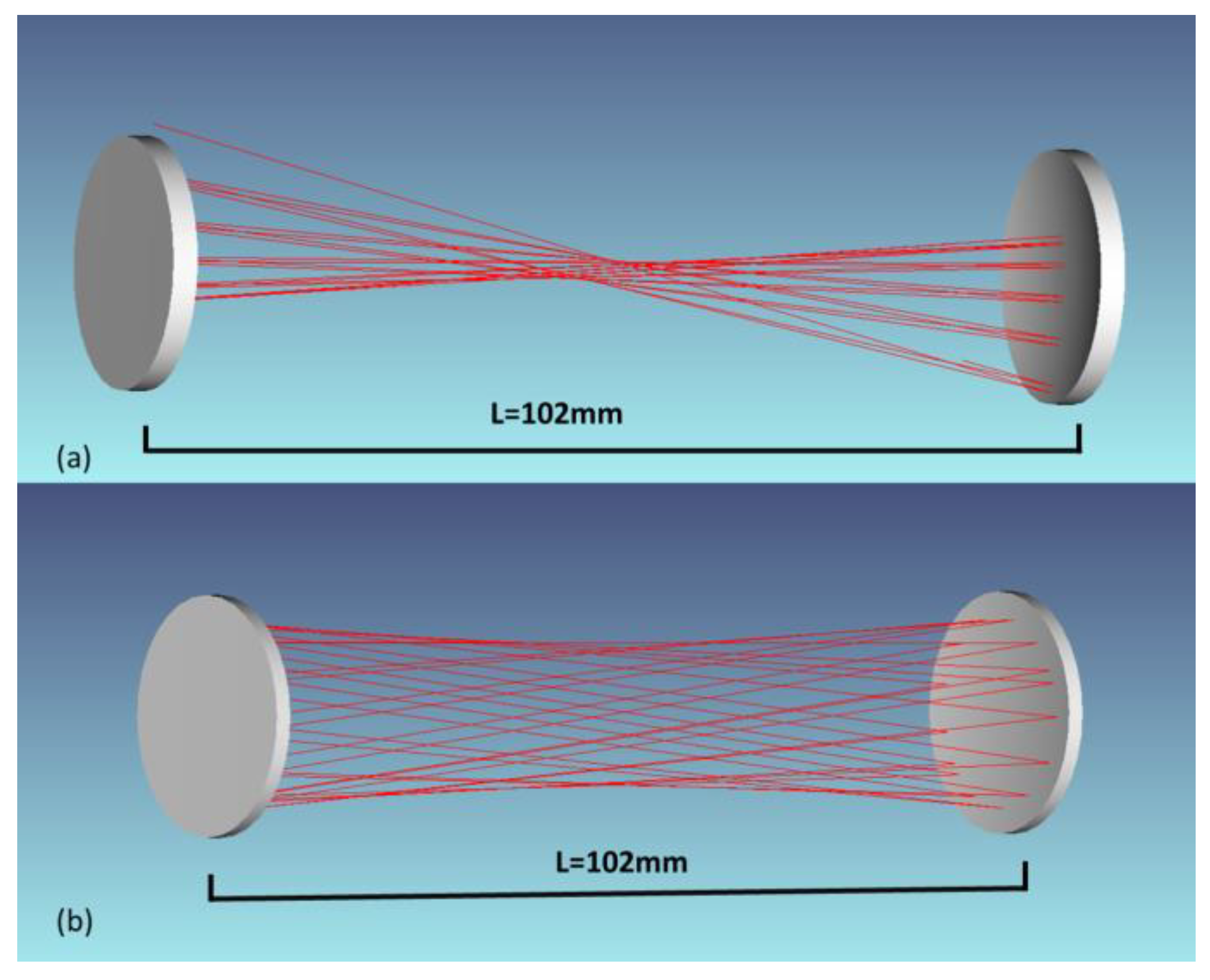

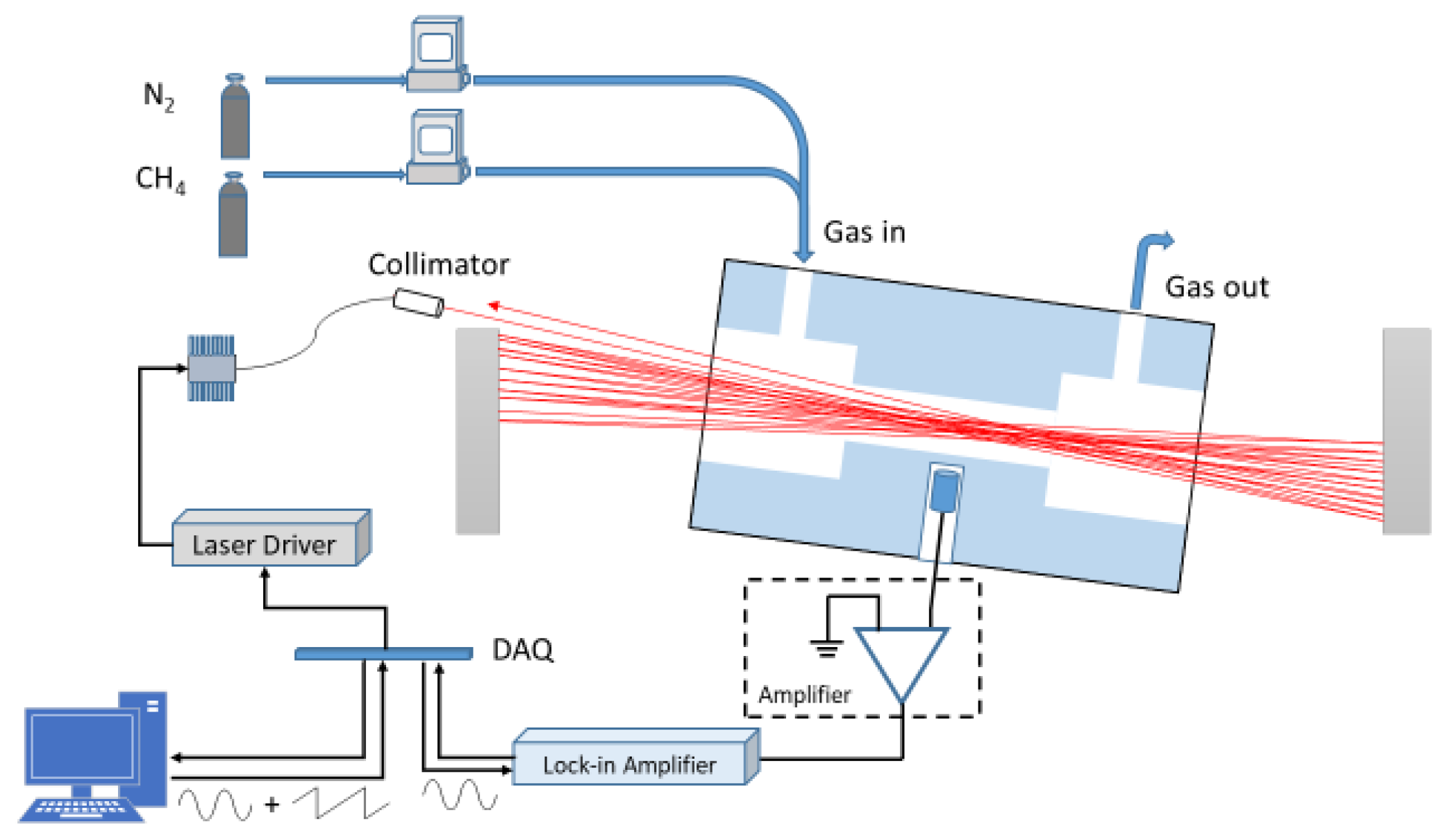

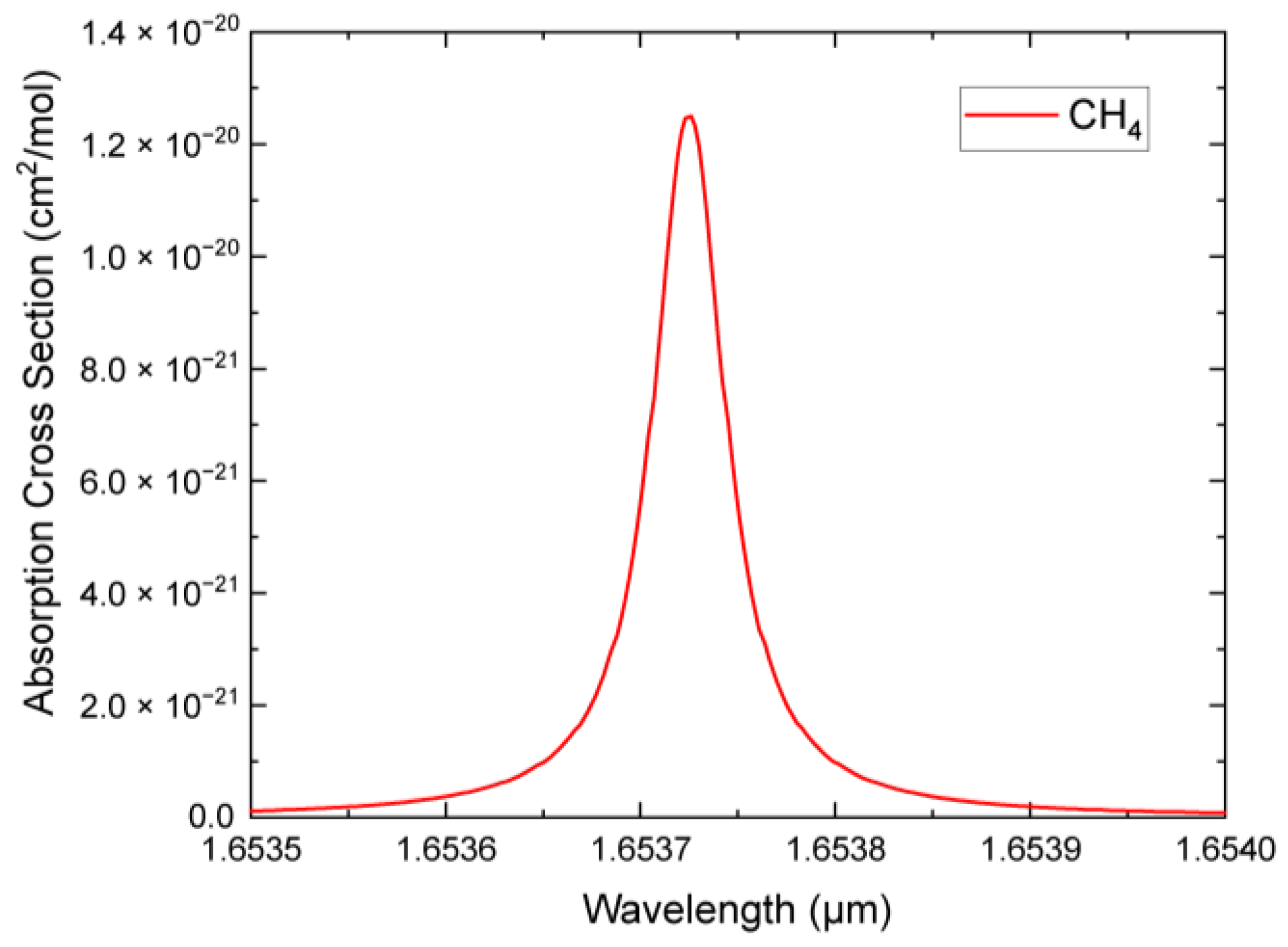
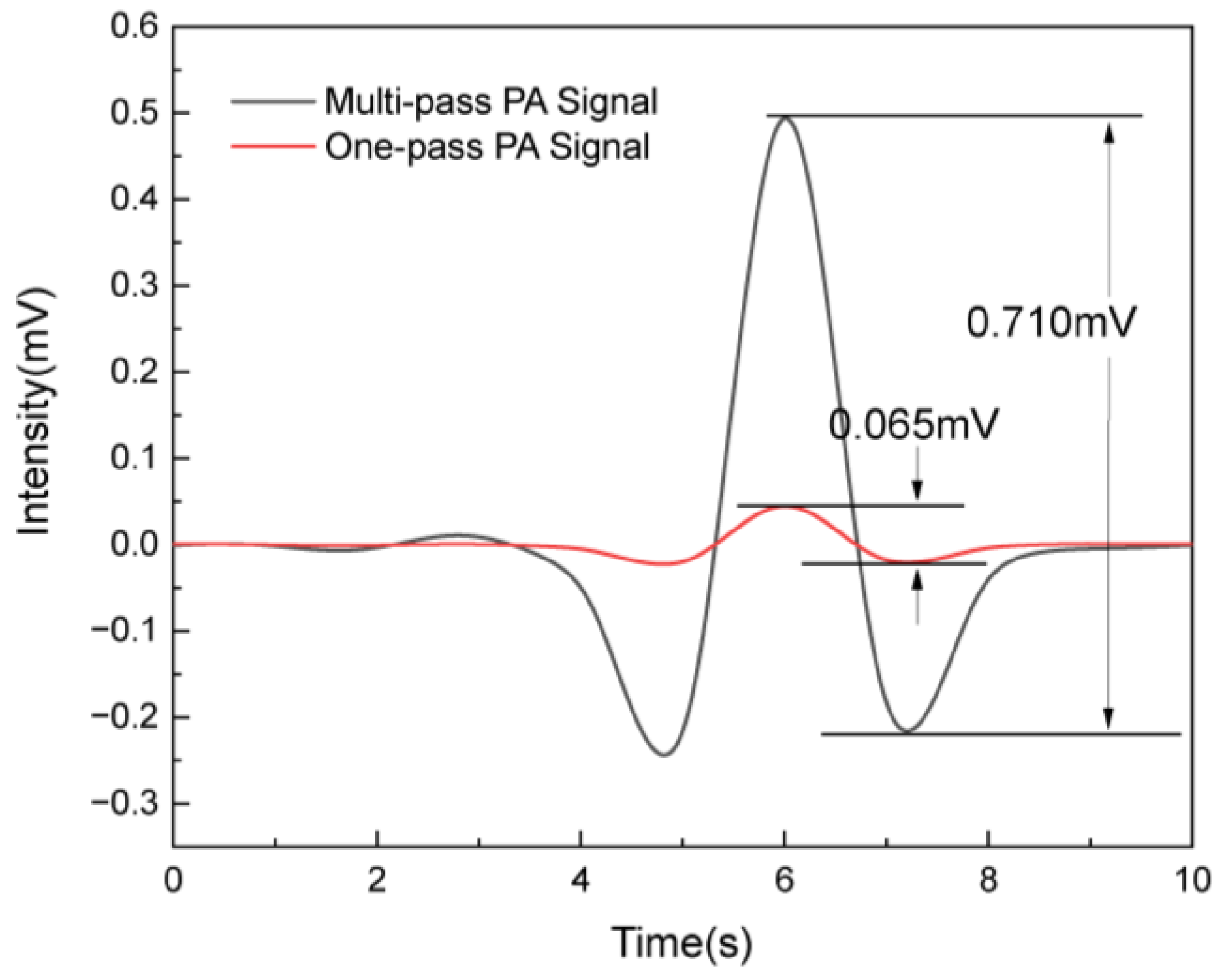



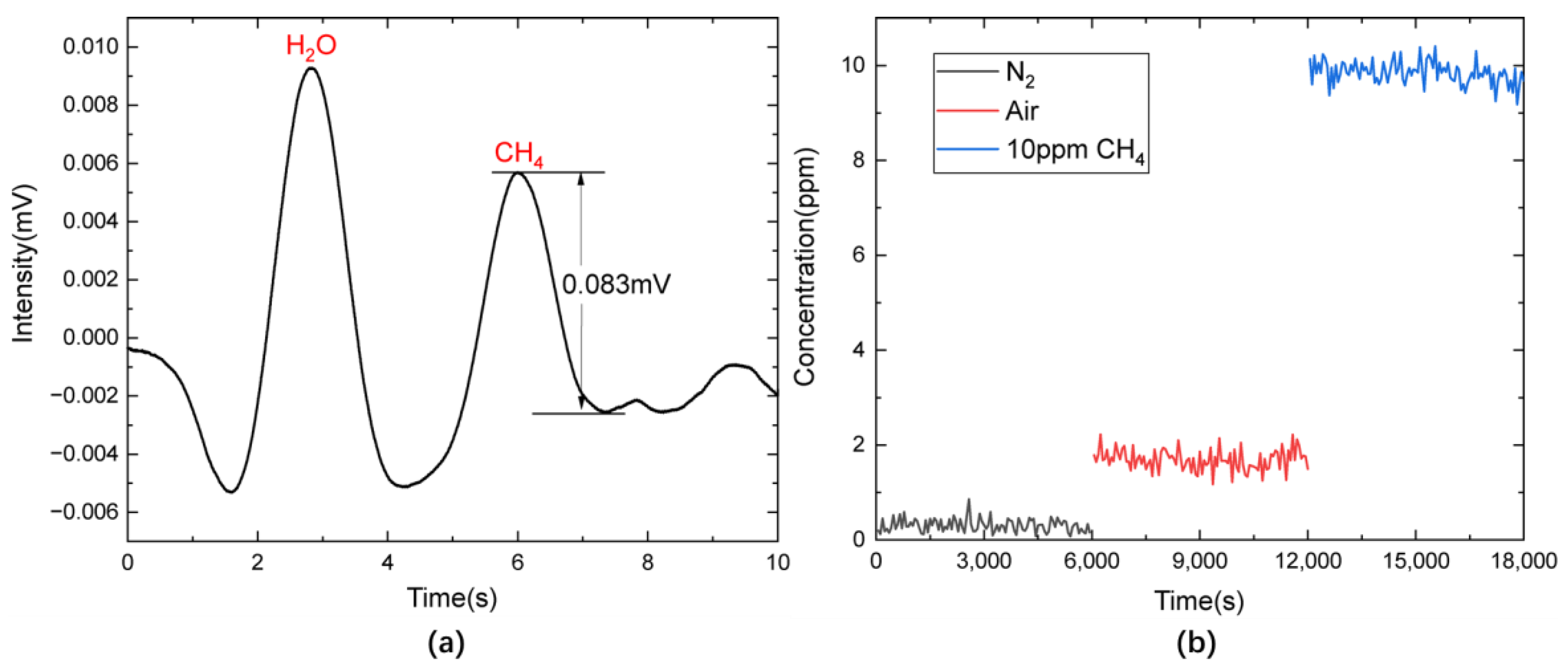
Disclaimer/Publisher’s Note: The statements, opinions and data contained in all publications are solely those of the individual author(s) and contributor(s) and not of MDPI and/or the editor(s). MDPI and/or the editor(s) disclaim responsibility for any injury to people or property resulting from any ideas, methods, instructions or products referred to in the content. |
© 2024 by the authors. Licensee MDPI, Basel, Switzerland. This article is an open access article distributed under the terms and conditions of the Creative Commons Attribution (CC BY) license (https://creativecommons.org/licenses/by/4.0/).
Share and Cite
Wang, L.; Zhang, T.; Huang, Y.; Zheng, Y.; Wang, G.; He, S. Enhanced Photoacoustic Spectroscopy Integrated with a Multi-Pass Cell for ppb Level Measurement of Methane. Appl. Sci. 2024, 14, 6068. https://doi.org/10.3390/app14146068
Wang L, Zhang T, Huang Y, Zheng Y, Wang G, He S. Enhanced Photoacoustic Spectroscopy Integrated with a Multi-Pass Cell for ppb Level Measurement of Methane. Applied Sciences. 2024; 14(14):6068. https://doi.org/10.3390/app14146068
Chicago/Turabian StyleWang, Lihui, Tie Zhang, Yan Huang, Yuhao Zheng, Gaoxuan Wang, and Sailing He. 2024. "Enhanced Photoacoustic Spectroscopy Integrated with a Multi-Pass Cell for ppb Level Measurement of Methane" Applied Sciences 14, no. 14: 6068. https://doi.org/10.3390/app14146068
APA StyleWang, L., Zhang, T., Huang, Y., Zheng, Y., Wang, G., & He, S. (2024). Enhanced Photoacoustic Spectroscopy Integrated with a Multi-Pass Cell for ppb Level Measurement of Methane. Applied Sciences, 14(14), 6068. https://doi.org/10.3390/app14146068







